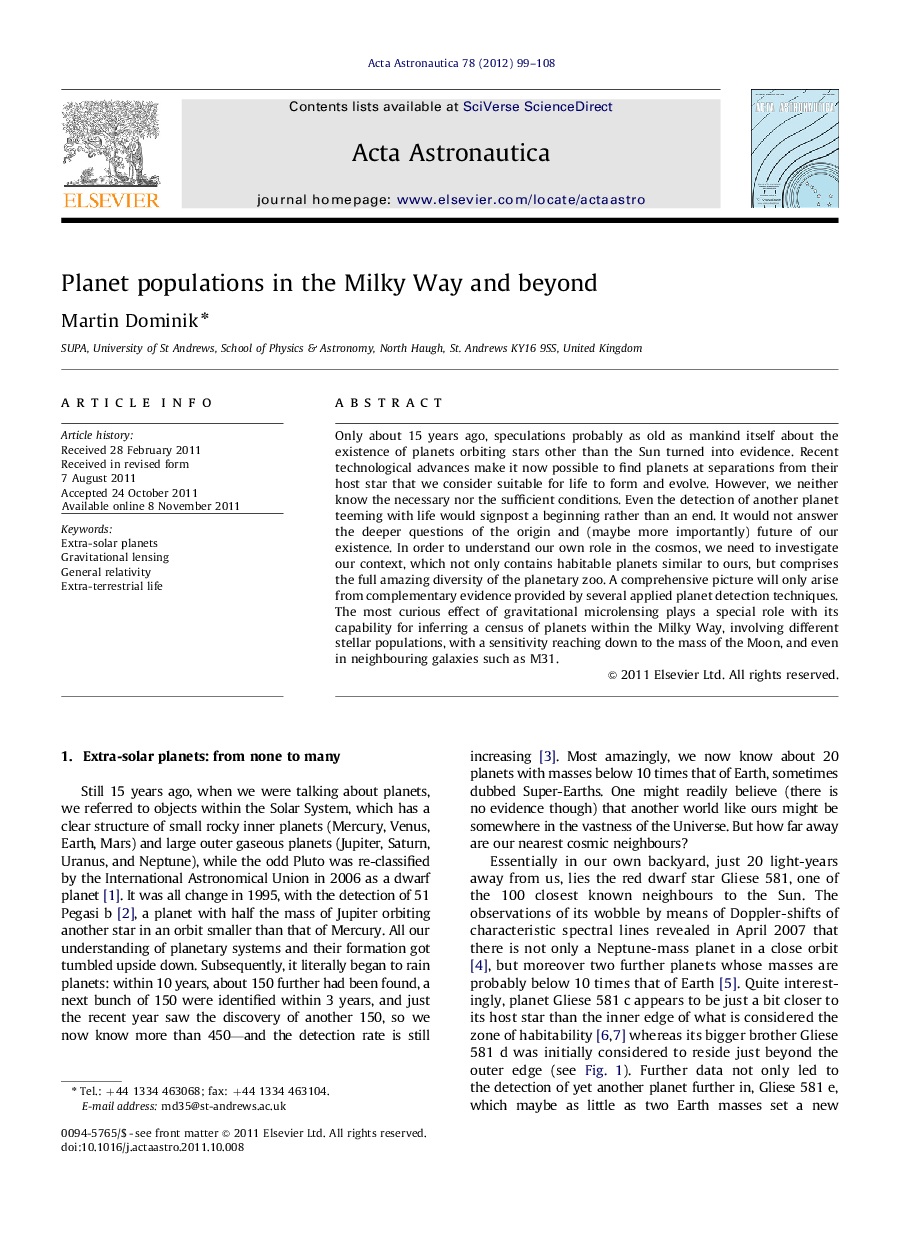| Article ID | Journal | Published Year | Pages | File Type |
|---|---|---|---|---|
| 1715282 | Acta Astronautica | 2012 | 10 Pages |
Only about 15 years ago, speculations probably as old as mankind itself about the existence of planets orbiting stars other than the Sun turned into evidence. Recent technological advances make it now possible to find planets at separations from their host star that we consider suitable for life to form and evolve. However, we neither know the necessary nor the sufficient conditions. Even the detection of another planet teeming with life would signpost a beginning rather than an end. It would not answer the deeper questions of the origin and (maybe more importantly) future of our existence. In order to understand our own role in the cosmos, we need to investigate our context, which not only contains habitable planets similar to ours, but comprises the full amazing diversity of the planetary zoo. A comprehensive picture will only arise from complementary evidence provided by several applied planet detection techniques. The most curious effect of gravitational microlensing plays a special role with its capability for inferring a census of planets within the Milky Way, involving different stellar populations, with a sensitivity reaching down to the mass of the Moon, and even in neighbouring galaxies such as M31.
► An era of speculation about other worlds gives way to a new age of exploration. ► We need to embrace the amazing diversity of the planet zoo rather than focusing on similarity. ► Several applied planet detection techniques need to provide complementary evidence. ► The most curious effect of gravitational microlensing can deliver population statistics of cooler planets throughout the Milky Way and even in other galaxies. ► As we are advancing into hitherto uncharted territory down to the mass of the Moon, a story of surprises is likely to continue.
